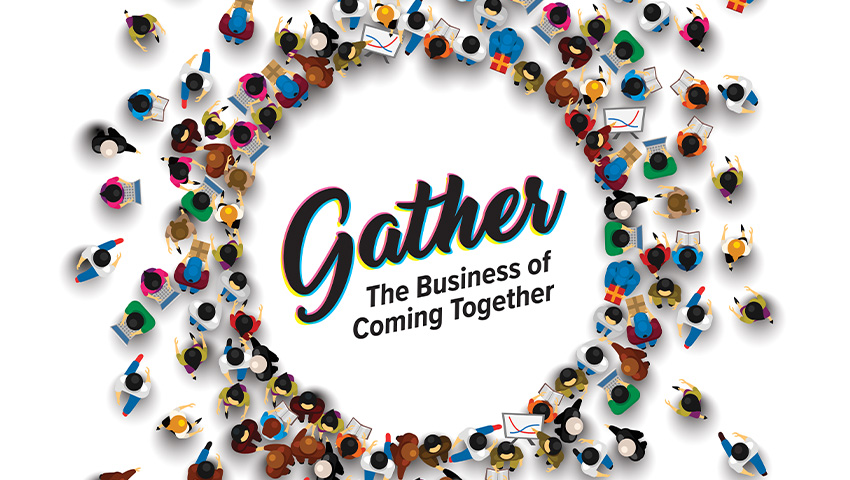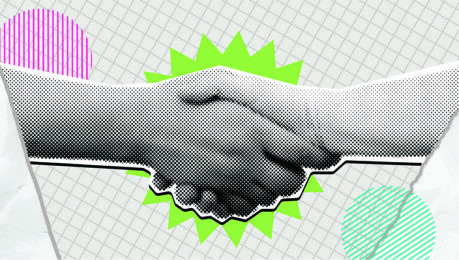Gatherings come in all shapes and sizes. They might last an hour, a few days or longer. Deciding on the right window of time says a lot to your prospective attendees: We’ve got a lot of things to share, a lot of work to do, a lot of fun to be had.
Or, you’re busy. Let’s cut to the quick.
Be honest with yourself when deciding the time commitment you’ll be asking of attendees. You might think you’ve got a lot of valuable content to share that’s well worth their time, but do you really? Do they need to experience all this?
When in doubt, keep it short; leave them wanting more. Here are a few things to consider when charting your agenda:
- Mix it up: from big sessions to small moments, intense lectures to quiet reflection. Craft a story with time that builds momentum, provides moments of curiosity and release. Make it a real page-turner
- Leave plenty of unscheduled time. As mentioned earlier, attendees have lives on the side and likely work tasks to address while participating in your event. Plus, they might just need a break to refresh their senses.
If you want your brand to breathe, don’t suffocate your tribe.
- Be respectful of your attendees’ time; make sure every moment has value by complementing your must-see activities with lighter moments of surprise and delight sprinkled throughout the agenda and venue.
We’ll look at how the use of space affects the journey in a later chapter. Here, let’s delve into the types of experiences you might deploy and how they’ll add to the attendees’ journey.
Arrivals

Think about how you’ve arrived at personal gatherings: walking into a vast stadium alive with 50,000 roaring fans, taking the first steps down the flower-lined aisle toward the altar, bringing a beer to your dad in his workshop out back.
Read More: Sports Arenas and Stadiums: On Game for Meeting Planners This Year
How can you translate these visceral experiences into your business event? What will be an attendee’s first interaction with your environment?
Doors, curtains, elevators or sea breezes? What will be the backdrop when they encounter their first familiar face or brand activation? When will they know they’ve officially arrived? How soon will they cheer, laugh, hug and learn?
So Many Opportunities!
Certainly, there are touchpoints well before the events: invitations, registration, know-before-you-go letters and the like. Let’s talk about the timeline of moments that will ultimately deliver attendees to your event, each one an opportunity to connect in a special way. Here are just a few to consider:
- Arriving at the departure airport
- The flight (or other conveyance)
- Landing and transferring through the airport
- Transfer to the venue or lodging
- Porte-cochere and entrance
- Lobby area
- Hotel check-in
- Transfer to room
- Arriving in room
- Event registration
- First scheduled event
- First general session
So, by the time most attendees encounter your brand and event for the first time, they’ve likely interacted with a number of third-party agents; waited in lines; confronted kiosks, chatbots and apps; been confined in small, airborne spaces for long periods; and dealt with a few frustrations and challenges along the way.
Create a Threshold Moment
At what point will they recognize they’ve stepped into your experience? And what will they find there?
Too often it’s a queue line to get a badge, or maybe just another kiosk and printer. There might be signs pointing hither and yon, trying to steer them where organizers want them to be. In the aftermath of the pandemic, first impressions will also involve a health interrogation, a thermometer to the forehead and a swab up your well-swabbed nose.
What’s the one element that might make all of these touch points more personal and valuable? I’d say, people, live humans. Position employees or leaders at every step to inject those moments with warmth, unique brand enthusiasm and an authentic, empathic touch.
Apps are practical; people are powerful.
Departures
I don’t think we give enough attention to how our business gatherings end. One might culminate with a flashy, boozy night and a morning of hungover colleagues avoiding eye contact in the lobby. I’ve seen expensive closing sessions devolve into a mad dash for the airport shuttle—don’t forget your box lunch!
How do you make the last moments valuable, and how do you keep the emotional flame of your event alive for months to come? Entire books have been written about the latter topic, maintaining a strong bond with the community you’ve gathered. As for the matter of final moments of a program, here’s some thinking.
—
This is an excerpt from Gather: The Business of Coming Together, which you can order on Amazon.
A gifted storyteller, writer, author and speaker, Doug Binder makes business personal for audiences and engagements of all kinds. In his three decades as a producer and creative director, Binder has staged events and campaigns around the world for globally important companies and visionary leaders across myriad industries, from high-tech and bio tech to entertainment, automotive, hospitality and shoes. Yes, shoes. Connect with Doug Binder at binderama.us and on LinkedIn, Instagram and Facebook.





